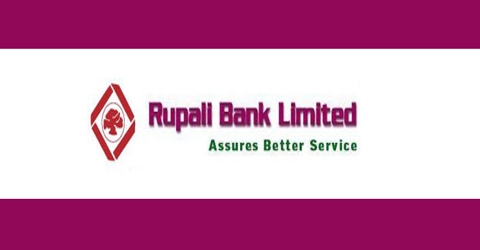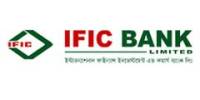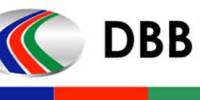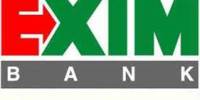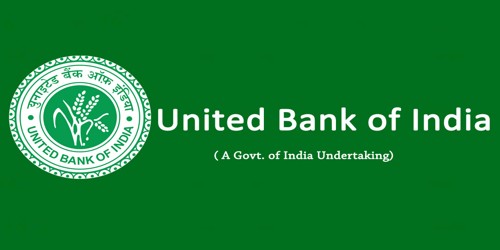Major objective of this report is to analysis Deposit and Credit Service and Performance Appraisal of Rupali Bank Limited. Other objectives are to the financial performance of the bank and to know the management skillfulness. Report also discuss on about the products regarding the deposit, loan and advance. Finally find out the strength, weakness, opportunity and threat and find out problems on related subjects and get the ways for solving the problems.
Introduction
The study on deposit, loan and performance evaluation guide us to know the present condition of Rupali bank limited . A bank provides the loan on the basis of its deposit collection and borrowings to get interest as income . Deposit , loan and performance evaluation help us to comment on the bank. Here the operation has done on the deposit , loan and performance evaluation of Rupali bank limited .
Deposit is the main component of bank’s fund . The existence of a commercial bank is totally impossible in the absence of deposit. So, every bank expects that deposits will be sufficient, safe and the flow of deposit will remain smooth. Changes and different mixtures in economic and commercial activities make deposit management challenging to the bank manager .The diversity of transactions among money market and capital market participants continuously influence bank deposit.
The core objectives of deposit are collection of bank fund, ensure productive investment of the scattered savings of the clients, extending the scope of loan, fulfilling the excess need for money and maintaining social responsibility.
In real life individuals or institution face some situations when they feel the necessity of collecting, achieving or using some things for which they may not have adequate required purchasing power. On the other hand, there are individual or institution that have surplus funds after fulfilling both of their recurring and invest requirements. By way of deposit, bank takes these surplus funds in its custody. Bank again temporarily transfers these funds for a specific duration in exchange of some interest or profit to those who do not have required purchasing power but have capacity to utilize borrowed funds for some productive and profitable project. Here “temporarily” means that the users will return the “provided purchasing power” as loans after some time as per the terms of the contract.
Loan means the lending of a sum of money by a lender to a borrower to repay with a certain amount of interest. Loans refer to a formal agreement between a bank and borrower to provide a fixed amount of credit for a specified period.
So as a profit oriented business organization , if a bank gives its resources temporarily under certain conditions and for a specific duration , it will be called loan time to time , the term loan , credit and advance are used separately in different spheres
For evaluating the performance of Rupali bank limited five types of ratios have discussed. These ratios are liquidity ratio , asset management ratio , debt management ratio, profitability ratio and market value ratio .
Historical Background
Rupali Bank Ltd. was constituted with the merger of 3 (three) erstwhile commercial banks i.e. Muslim Commercial Bank Ltd. Australasia Bank Ltd. and Standard Banks Ltd. operated in the then Pakistan on March 26, 1972 under the Bangladesh Banks (Nationalization) Order 1972 (P.O. No. 26 of 1972), with all their assets, benefits, rights, powers, authorities, privileges, liabilities, borrowings and obligations. Rupali Bank worked as a nationalized commercial bank till December 13, 1986.
Rupali Bank Ltd. emerged as the largest Public Limited Banking Company of the country on December 14, 1986.
Objective of the study
- To find out the strength, weakness, opportunity and threat
- To present the financial performance of the bank
- To Pinpoint The operational procedure of the bank
- To know the management skillness
- To get the ways for solving the problem
- Strengthen the bank’s brand recognition
- To know about the products regarding the deposit, loan and advance.
Rupali Bank Corporate Governance:
Rupali Bank believes in the continued improvement of corporate governance. This in turn has led the bank to commit considerable resources and implement internally accepted corporate standards in its day-to-day operations.
Being a public limited company, the Board of Directors of Bank has a pivotal role to play in meeting all stakeholders’ interest. The Board of directors and the Management team of Rupali Bank are committed to maintaining effective corporate governance through a culture of accountability, transparency, well understood polices and procedures. The Board of Directors and the Management team also persevere to maintain compliance of all laws taken by Bangladesh Bank.
Rupali Bank is truly transparent that performs banking functions at the highest level of integrity and accountability on global standard.
Corporate Social Responsibility (CSR)
Rupali Bank Ltd. RBL has been rendering various services for attaining greater social goals and objectives. In this process, we aim to the development of the society as a whole and fulfillment of corporate social obligation in particular. To reinforce CSR activities, the bank has undertaken fresh initiatives in line with Bangladesh Bank guidelines in the areas of social service. Internship employment of poor, sports and culture, banking for the disadvantaged group, disaster and relief and activities.
Social Services:
RBL has been rendering social services as per laid down guidelines of the govt. The bank has been disbursing pension of govt. employees, monthly salary of teachers, govt. and semi govt. officials without charge.
Internship:
Rupali Bank has been rendering internship to students of various educational institutes at the level of graduate and post graduate.
Empowerment of Poor:
Rupali Bank Ltd. has been providing wholesale credit facilities to different micro credit institution who are in turn lending amongst the poor people in different income generating activities (IGA)
Banking Service for the Disadvantaged Groups:
With 492 branches all over Bangladesh RBL could reach the banking services to the disadvantages group with the aim to encourage them mobilization of their hard earned saving and creation of investment opportunities for them.
Disaster Relief:
Rupali Bank Ltd. Always stands beside the helpless people at the times of natural calamities and extends helping hands to the sufferers. RBL donate TK. 15 Lac to the help the victims of cyclone “Ayla” to the relief fund of the Prime Minister.
Business growth of banking sector in Bangladesh and growth of Rupali bank.
About 54 schedule banks operate banking business in our country. Every year these banks open new branch in various areas to increase their business. Undoubtedly banks are playing pivotal role in economic development through fund transfer from surplus sector to deficit sector. Banks finance in industrial, agriculture and trading sector to increase output/production by creating employment opportunity for people. We find that every bank (Government Bank & private bank) earn handsome increasing operating profit. Some banks have merchant banking wing to operate business in share market. Many private banks are opening branch in rual areas also to facilitate banking service to common people. As a result common people are benefited through getting banking service (eg. credit facilities, remittance facilities, deposit scheme etc). Banks are also making profit to increase banking service. The following chart indicates increased profit of banking sector in consecutive three year. It proves that expansion of banking business is taking place over the years.
Deposit and loan scheme of Rupali Bank Ltd.
Rupali deposit scheme (RDS)
Rupali deposit scheme is an installment based savings scheme of Rupali Bank for a single individual. Rupali Bank offers competitive interest rates and installments that are affordable for customers.
Monthly deposit:
The minimum monthly deposit is BDT 500. One may deposit any amount in the multiples of BDT 500, subject to a maximum of BDT 5000.
Number of RDS Account: Only one account in an individual name.
Who can apply?
Any Bangladeshi citizen, 18 years or over is eligible to avail the facility of Rupali Bank RDS scheme. Account can not be opened by minor or in joint name.
Closure of account
The account will immediately cease to operate in case of the following:
Death of the account holder
Failure to pay 3 consecutive installments
Rate of interest: 7%
Documentation:
To open a RDS account, one will be required to do the followings:
Fulfilling account opening formalities (proper introduction and photograph)
Filling in RDS application form
Rupali Deposit scheme: Monthly installment VS maturity value
| Monthly deposit amount | Maturity value after 5 years | Maturity value after 10 years |
| 500 | 35773 | 85860 |
| 1000 | 71547 | 171721 |
| 1500 | 107321 | 257582 |
| 2000 | 143095 | 343442 |
| 3000 | 214642 | 515164 |
| 5000 | 357738 | 858607 |
Miscellaneous:
Tax or charges will be imposed by govt. order (if any)
Authority deserves for any alteration of interest rate or addition or amendment.
Rupali Monthly earning scheme: (RMES)
There is a substantial demand of monthly earning long term deposit schemes among the retired service holders and wage earners residing abroad who want to help their dependants and relatives by contributing a certain amount of money on monthly basis from the interest of their one time deposit with the Bank. Again there are persons who want to meet day to day expense of their families out of monthly earning that may be received on their long – term deposits.
Rupali Bank Ltd. as a pioneer of welfare banking is receiving demands from the vast majority for introduction of attractive monthly earning scheme to encourage them to meet their above needs out of earnings of their deposit.
One time deposit amount:
One time deposit amount is at least TK=50000/- and its multiple (i.e. 100000, 150000, 200000, 250000) there is no limit of maximum amount.
Period: Three years, interest note is 8% and Five years – interest note is 8.50%
Account Open: One time deposit account may be opened in individual or institution name.
Credit facility: 80% of deposit and interest rate will be above 3% on deposit interest rate.
Sample calculation of Rupali monthly earning scheme (RMES)
| One time deposit | Term -3years interest note 8% per month earnings after tax | Term-5 years interest note 8.50% per month earnings after tax |
| TK= 100000/= | TK= 600/=
| TK=637/= |
| TK = 200000/= | TK= 1200/= | TK=1274/= |
Fixed deposit:
There are many people who want to deposit them money for a certain period for increasing their fund / capital. After certain period they withdraw deposited money with interest. Rupali Bank has fixed deposit scheme with competitive interest rate. The following chart shows the picture of this scheme.
| Term/Period of one time deposit | Rate of interest |
| Three months | 7.50% |
| Six months above less than one year | 7.75% |
| One year and less than Two year | 8% |
| Two year and up to 3 years | 8.5% |
SME LOAN
Small and medium Enterprise Financing contributes to a positive impact in the economy of the country. In developing countries like Bangladesh, the demand for expanding SME business is increasing day by day. Even the donors are also encouraging to expand the volume of such kinds of business to face the challenge of poverty and to create employment opportunities in the country. Rupali Bank Ltd. also play a vital role in this sector and can help to promote the expansion of SME business in the country.
There are four product under SME financing.
These are:
- Sahaj Rin
- Sulav Rin
- Businessman Rin
- Majari (medium) Rin
Sahaj Rin:
- Loan facilities up to 2.00 (two) lac
- Proprietorship and partnership firm only included in this scheme
- Loan will be approved by branch manager (But loan information must be furnished by weekend)
- Personal guarantee of a solvent family member and 3rd party guarantee of an acceptable individual or collateral security of equal value of loan will be taken against this loan.
- A plan about the use of loan will be taken by borrower. And how much worker / employee (Full time or part time) will be employed should be mentioned in this plan.
- Post dated cheques equivalent to loan installment with interest and one cheque covering full loan from borrower.
- Loan processing fee TK= 1000/=(Nonrefundable)
- Trade license, photograph, partnership deed (if applicable) stock report, Income& Expenditure statement will be taken from borrower.
- Term loan (1-3) year by monthly or quarterly installment and exiting rules will be applicable in case of working capital / continuous loan.
- Interest rate 11 % (changeable), 1% rebate in case of regular payment.
- Interest rate 10% in following specialized sectors.
- Solar installation.
- Bio-gas based project.
- Agro – based project.
- Skillness (at least three months Training from government approved institution)
Sulav Rin:
- Interest rate 10% in following specialized sectors.
- Interest rate 12 % (changeable), 1% rebate in case of regular payment.
- Term loan (1-4) years by monthly or quarterly installment and exiting rules will be applicable in case of working capital / continuous loan.
- Trade license, Rupali Bank account, photograph, partnership deed (if applicable) stock report will be taken
- Loan processing fee TK = 5000/=(Nonrefundable)
- Post dated cheques equivalent to loan installment with interest and one cheque covering full loan will be taken from borrower.
- A plan about the use of loan will be taken by borrower. And how much people (full time or part time) will get employment opportunity should be mentioned in plan.
- Personal guarantee of a solvent family member and Declaration of asset (equimlent to loan amount) must be given. 3rd party guarantee of an acceptable individual to Bank will be taken.
- Inially branch manager will approve and Zonal head will counternigh after verification
- Proprietorship & partnership firm included in this scheme. Besides professionals (engineer, doctors, lawyers etc.) will be given priority.
- Loan facilities up to 5.00 (five) lac
Solar installation.
Bio-gas based project.
Agro – based project.
Female entrepreneur will get 10.00 lac loan facilities under this scheme by complying same formalities.
Business Rin
- Loan facility up to 3 (three) crore.
- Approval authority
- Managing director : Above 30.00 to 3.crore
- DGM (Zonal head): Upto 30.00 lac
- AGM : Upto 20.00 lac
- Personal guarantee of a solvent family member and collateral security of forced sole Value equivalent to loan.
- A detailed plan about the objective, uses and payment of loan must be submitted. How much people will get employment opportunity (full time or part time) must be mentioned in this plan.
- Post dated cheques equivalent to loan installment with interest and one cheque covering full loan will be taken from borrower.
- Loan processing fee TK = 10000 /= (Nonrefundable)
- Business license, trade license, Rupali Bank account, photograph, partnership deed (if applicable) Income expenditure statement, stock report, and personal networth statement will be furnished.
- Interest rate 13 % (changeable), 1 % rebate in case of regular payment
- Interest rate 10% in following specialized sectors.
Solar installation.
Bio-gas based project.
Agro – based project.
Mazari (medium) Rin:
- A plan about the objective, use and payment of loan will be taken from borrower. How much people (full time or part time) will work in this project must be mentioned in this plan.
- Post dated cheques equivalent to loan installment with interest and one cheque covering full loan will be taken from borrower.
- Loan processing fee TK = 15000 /=(Nonrefundable)
- Business license, trade license, Rupali Bank account, photograph, partnership deed (if applicable), profit and loss statement, memorandum or article of association, audited balancesheet, financial statement, stock report, and other related paper will be furnished.
- In case of term loan period will be 1 – 5 years by monthly or quarterly installment and in case of working capital, existing rules will be applicable.
- Interest rate 13 % (changeable), 1 % rebate in case of regular payment.
- Interest rate 10% in following specialized sectors.
Household loan (consumer financing)
People of developing countries like Bangladesh earn low income. They can not purchase household item like TV, refrigeration, Air cular etc. in spite of being necessary. For this reason they cannot improve their life standard. In order to help people specially limited income service holder to buy household item Rupali Bank Ltd. introduce this loan scheme.
- Objectives of scheme:
- To help people / service holder in buying house item.
- To help people / service holder in improving life standard.
Qualification of applicant:
Employee of government institution, semi government, sector, corporation and autonomous body, state owned commercial banks and insurance company, universities, government college, government school and madrasha , teacher of government primary, member of armed forces (military, BGB, Police and Ansar)
Besides Executives of NGOs, professional (doctor, engineer, lawyers, chartered accountant, journalist etc.) and business.
Age of applicant: Age limit will be from 21 to 55 years.
Usages of loan:
Only in buying household item- such as refrigerator, TV, DVD, motorcycle, washing machine, ac, sewing machine, personal computer.
Type of household item & highest loan limit:
| Sl. No. | Types of item | Highest limit | Down payment | Interest | Period |
| 1 | Refrigerator | 25000 | 25% | 16% | 2 years |
| 2 | Color TV | 20000 | 25% | 16% | 2 years |
| 3 | Motorcycle, | 50000 | 25% | 16% | 2 years |
| 4 | Personal computer | 75000 | 25% | 16% | 2 years |
| 5 | Washing Machine | 20000 | 25% | 16% | 2 years |
| 6 | Furniture | 36000 | 25% | 16% | 2 years |
| 7 | Air Cooler | 30000 | 25% | 16% | 2 years |
Principles of borrower selection:
Incase of borrower mentioned in 2.1 serial, personal guarantee of employer/departmental head must be taken, loan proposal will be considered according to their recommendation and guarantee. Personal guarantee from an acceptable person to bank in case of borrower mentioned in 2.2.
Rules of application: Applicant must apply with prescribed bank form mentioning name, address, monthly salary etc. At least 3 quotations of desired articles will be submitted with application. Price of articles will be paid to seller/ supplier through bank draft/cheque/pay order. Cash memo will be in the name of bank and it will be changed in favour of client after realizing payment of bank.
Loan approval power:
| Designation | Up to TK. |
| Manager (SPO) | 0.50 Lac |
| Manager or Zonal Head (AGM) | 0.75 Lac |
| DGM | 1.00 Lac |
Security:
- Letter of hypothecation and undertaking
- Employer’s undertaking in case of service holder
- DP note $ C.F. 11
Rules:
- Installment size should not above 50% of monthly salary
- 1% rebate in case of timely payment
- Any damage or repairing of product must be born by borrower. Registration cost or license of product will be at the expense of borrower.
- Only borrower will be articles/product, he has no right to rent or hand over product without bank permission.
Export financing
An exporter requires finance at two stages, namely –
- Pre – shipment stage &
- Post – shipment stage
We may classify export finance into two categories
- Pre – shipment credit &
- Post – shipment credit
Pre – shipment credit:
Pre – shipment credit, as the name suggests, is given to finance the activities of an exporter prior to the actual shipment of goods for export. The purpose such credit is to meet working capital needs starting from the point of purchasing of raw materials to transportation of goods for export to foreign country. Before allowing such credit to the exporters the Bank takes into consideration the credit worthiness export performances of the exporters, together with all other necessary information required for sanctioned the credit in accordance with the existing rule sand regulations. Pre – shipment credit is given for the following purposes:
- Cash for local procurement and meeting related expenses
- Procuring & Processing of goods for export
- Packing & transporting of goods for export
- Payment of Insurance Premium
- Inspection fees
- Freight charges etc.
An exporter can obtain credit facilities against lien on the irrevocable, confirmed, and unrestricted export letter of credit.
Pre – shipment credit takes the following forms:
- Export cash credit (Hypothecation)
- Export cash credit (Pledge)
- Export cash credit against trust receipt.
- Packing credit
- Back to back letter of credit
- Credit against Anticipatory letter of credit
Export cash credit (Hypothecation)
Under this arrangement a credit is sanctioned against hypothecation of the raw materials or finished goods intended for export. Such facility is allowed to the first class exporters. As the Bank has got no security in this case, expect charge documents and lien of export L / C contact, Bank normally insists on the exporter in furnishing collateral security. The letter of hypothecation creates a charge against the merchandise in favor of the Bank but neither the ownership not the possession is passed to it.
Export cash credit (Pledge)
Such credit facility is allowed against pledge of exportable goods or raw materials. In this case cash credit facilities are extended against pledge of goods to be stored in go – down under Bank’s control by singing letter of pledge and other pledge documents. The exporter surrenders the physical possession of the goods under Bank’s effective control as security for payment of Bank dues. In the event of failure of the exporter to honour his commitment, the Bank can sell the pledge merchandise for recovery of the advance.
Export cash credit against trust receipt
In this case, credit limit is sanctioned against trust receipt (T. R.).In this case also unlike pledge, the exportable goods remain in the custody of the exporter. He is required to execute a stamped export trust receipt in favor of the Bank. Where in a declaration is made that goods purchased with financial assistance of Bank are held by him in trust for the bank. This type of credit is granted when the exporter wants to utilize the credit for processing, packing & rendering the goods in exportable condition when it seems that exportable goods cannot be taken into Bank’s custody. This facility is allowed only to the first class party and collateral security is generally obtained in this case.
Packing credit:
In this case credit facilities are extended against security of railway receipt/ steamer/receipt/barge receipt/ truck receipt evidencing transportation of goods to the port for shipment of the goods in addition to the usual charge documents and lien of export letter of credit. This type of credit is sanctioned for transitional period from dispatch of the goods till negotiation of the export documents. The drawings under export cash credit limit are usually adjusted by drawings in packing credit limit which is in turn liquidated by negotiation of export documents.
Back to back letter of credit:
Under this arrangement the bank finances export business by opening a letter of credit on behalf of the exporter who has received a letter of credit from the overseas but is not actual manufacturer or producer of the exportable goods. The letter of credit is opened in favor of the producer or supplier within or outside of the country. Since the letter of credit is opened on the strength of and of and backed by another letter of credit it is called “Back to Back credit”. The need for the Back to Back credit arise the beneficiary of the original (export) letter of credit may have to procure the goods from the actual producer who may not supply the goods unless its payment is guaranteed by the bank in form of letter of credit collateral security before opening the letter of credit. The back to back letter of credit must conform the terms and conditions of the original letter of credit with the following exceptions:
- Names of the original beneficiary shall be submitted by that of the actual supplier.
- The credit amount shall normally be lower than that of the original letter of credit, the difference being the amount of profit the exporter exports to earn from the deal.
- The back to back letter of credit shall be made valid for shipment and negotiation prior to expiry of the corresponding date.
- Advance against Anticipatory letter of credit (Red Clause L / C)
Under Red clause letter of credit, the opening bank authorizes the Advising bank / negotiating bank to make advance to the beneficiary prior to shipment to enable him to procure his exportable goods in anticipation of his effecting such authority is printed / typed in red ink and in green ink on the top of the L/C is called Red clause L/C.
The following documents papers are usually called for depending on the nature of the export credit facility to be provided at the Pre – shipment stage:
- Lien on confirmed irrevocable and unrestricted letter of credit from a first class Bank.
- Letter of Hypothecation duly stamped
- Letter of pledge duly stamped
- Detailed stock statement duly verified by Bank officials
- Insurance coverage under Bank mortgage clause
- Letter of disclaimer to be signed by the owner of the go – down in case of rented go – down
- Documents of little to goods
- Trust Receipt
- Export Credit Guarantee Scheme
- Export from duly signed by the exporter
- EPC / ERF duly certified by Bangladesh Bank
- Change and other documents, if any
Post Shipment Credit
This type of credit refers to the credit facilities extended to the exporters by commercial banks of the goods against export documents. Necessity for such credit arises as the exporter can not afford to wait for a long time for payment to local manufacturers/ suppliers. Before extending such credit, it is necessary to obtain report on creditworthiness the exporters and financial soundness of the buyers as well as other relevant documents connected with the export in accordance with the rules and regulations in force. Banks in our country extend post-shipment credit to the exporters through:
- Negotiation of Documents under L/C.
- Purchase of DP & DA bills.
- Advance against Export Bills surrendered for collection
- Negotiation of Documents under L/C
Under this arrangement, after the goods are shipped, the exporter submits the concerned documents to the negotiating bank for negotiation. The documents should be negotiated strictly in accordance with the terms and conditions and within the period mentioned in the letter of credit.
Purchase of DP &DA bills.
In such a case, the banks purchase/ discount the DP (Documents against payment) and DA (documents against Acceptance) bills at rate published by the Exchange Rate Committee of authorized dealers. While doing so, the Bank should scrutinize all the export documents separately and minutely and clear instructions are to be obtained from the drawer of the bill in regard to all important issues related to the negotiation of the bills.
Advance against Export Bills for collection
Banks generally accept export bills for collection of proceeds when they are not drawn under a L/C or when the document, even though drawn against an L/C contains some discrepancies. Bills drawn under L/C, without any discrepancy in the documents, are generally negotiated by the bank and the export gets the money from the bank immediately. However, if the bill is not eligible for negotiation, he may obtain advance from the banks against the security of export bills. Banks may give advance ranging from 50 to 80 percent of the document’s value. In addition to the export bills, banks may ask for collateral security like a guarantee by a third party and equitable/ registerd mortgage of property. Rate of interest 8%
Import Financing
One of the important functions of the commercial banks in the world is to undertake import of merchandise into the country and payment of foreign exchange towards the cost of the merchandise to foreign suppliers. In such an international trade, because of distance involved, buyers and sellers do not know each other. Therefore, assure these things to happen simultaneously by opening letter of credit guaranteeing payment to seller and goods to buyer.
While opening letter of credit at the request of buyer, bank normally examines:
- Buyer’s creditworthiness.
- Import Trade Regulations.
- Exchange Control Regulations.
Supplier’s Creditworthiness Report.
- Marketability of goods.
The buyer must submit the following papers at the time of opening a letter of credit.
i) L/C application ( a guarantee executed by third party is also insisted)
ii) Import License/ Import Authorization from or Import Registration certificate as the case may be.
Indent/ Performa Invoice.
- Insurance Cover Note.
- IMP form and other documents/ papers etc.
Payment against documents (PAD)
The negotiating bank, on receipt of the shipping documents from the exporter, scrutinizes the documents to ensure that they are in strict conformity with the terms of L/C. If the documents are in order, the payment is effected by the negotiating Bank to the beneficiary (exporter) and debit the opening Bank’s account with it or claim reimbursement from the designated / reimbursing bank as instructed by the opening bank and in fact, the amount so debited or lodging claim for reimbursement stands advanced on behalf of the importer. The shipping documents along with debit advice are thereafter forwarded to the opening bank by the designated / reimbursing bank.
If the shipping documents are found in order, the opening bank will lodge the documents to their book by converting the foreign currency representing the bill and foreign correspondent charges etc., and will respond to the debit entry originated there against by the designated / reimbursing bank to the debit of “Payment Against Documents (PAD)” account or “Bill of Exchange (B / E)” account as the case may be and an intimation is sent to the importer asking him to retire the import bills immediately sending there with a cost memo indicating the amount payable by the importer under different heads.
Thus, liability under the letter of credit is converted to bank’s advance. It is a prac ice to allow the importer to retire the documents till the ship carrying the goods arrives. Normally, ontstanding under PAD should not take more than 21 days for adjustment. If the importer retires the import bill against payment, the transaction ends there and the outstanding under PAD stands liquidated.
Loan against Imported Merchandise (LIM)
At the time of opening the letter of credit the banks obtain from the importer an agreement on stamped paper which provides for financing and, if necessary, clearance and storage of goods by debiting importer’s account at his risk and responsibility.
Importer may also request the bank on bank’s prescribed form for clearance of goods from the port when the consignment arrives. In most of the cases, banks extend credit facility to the importer for retirement and clearance of the consignment. In that case, the bank recovers further margin from the importer to cover the customs duty, sales tax or VAT etc. A definite repayment schedule is also given to the importer to take delivery of the goods from bank’s custody against payment.
In case the importer does not come forward to retire the documents inspite of repeated reminders, it is in the interest of the credit issuing bank to take proper care of the goods and, on forced circumstances, clear the imported consignment on arrival of the same for fear of heavy demurrage at the which adds to the burden of commitment.
In both the cases, whether the importer requests the bank for clearance of goods or fails for retirement of documents against payment, the liabilities under PAD or B/E is converted to “Loan against Imported Merchandise (LIM) account” and the overdue interest from the date of accompanying Bill of Exchange or negotiation date to the date of transfer to LIM liability.
The advances against merchandise account is a loan account and only amounts for clearance charges , such as, customs duty, sales tax or VAT etc., are allowed to be debited to LIM account.
After clearance, consignments are stored in bank’s go – down under its effective control waiting for taking delivery by the importer on full payment of bank’s liability. Normally part delivery is not allowed while on LIM account. When the delivery in part is desired by the importer, the LIM is converted into Cash Credit account retaining proper margin and executing proper charge documents. The delivery is effective there after on obtaining pro rata payment till adjustment of the entire liability.
Rate of interest 14%
Documents
- Demand promissory note
- Letter of continuity
- Letter of agreement of opening letter of credit
- Letter of Lien
- Letter of indemnity (in case of clearance of consignment)
- Letter of guarantee
Summary of Ratios:
| Ratios | 2010(Yrs) | 2009(Yrs) | 2008(Yrs) | 2007(Yrs) | 2006(Yrs) |
| Current Ratio | 1.9393 times | 1.8734 times | 1.5605 times | 1.4812 times | 1.5495 times |
| Fixed Assets Turn over Ratio | .2193 times | .7458 times | .4347 times | .7542 times | 1.2642 times |
| Total Assets Turn over Ratio | .0167 times | .0198 times | .0122 times | .0049 times | .0085 times |
| Debt Ratio | 88.63% | 106.35% | 109.92% | 112.94% | 99.56% |
| Net profit Margin on Sale | 28.73% | 95.90% | 86.53% | -2757.31% | 22.22% |
| Return on total assets | .48% | 1.9% | 1.06% | -13.51% | 1.89% |
| Return on common equity | 4.24% | -29.89% | -10.69% | -104.44% | 44.02% |
Comments:
From the above finding we can see that the current ratio of the bank are different in different years. But according to standard levels all the ratios are below than standard level. The ratio of 2010 is approximately 1.93 times nearer to standard level. And the ratio of 2007 is so far from the standard level.
From the above finding we can see that the fixed asset turn over ratio in the year 2006 is higher 1.2642 times and year 2010 is lower .2193 times.
From the above finding we can see that the total asset turn over ratio in the year 2009 is higher .0198 times and year 2007 is lower than any other year.
The calculated value show that the year 2010 is 88.63%, and the year 2007 is 112.94%, for debt ratio.
The profit margin on sales revenue ratio higher 95.90% , and the lower ratio is
-2757.31%(for great loss in 2007)
Calculated value of return on total assets show that the higher value is 1.9% in the year 2009 and the lower value -13.51% which has negative impact upon the Bank.
From the calculate value of return on common equity we can say that in the year 2006 performance is higher 44.02% and in the year 2007 is -104.44% which has negative impact on the bank.
Recommendation and Conclusion
From my survey I found out a clear picture, why the customers prefer Rupali Bank:
- Customers prefer Rupali Bank for friendly and sincere service of its employees.
- Businessmen prefer Rupali Bank for easy loan formalities specially SME loan. They have to face fewer formalities in getting SME loan.
- Borrowers prefer Rupali Bank for its low interest rate on loan.
- Depositors are not highly satisfied with interest given on deposit scheme but they are not dissatisfied.
- General customers prefer Rupali Bank as Rupali bank is old and trusted.
- Customers prefer Rupali Bank because of its market reputation.
- Customers prefer Rupali Bank for low remittance charge and prompt remittance service through “Western Union” and other such channel.
Recommendation
- Steps regarding modernization of banking should be taken just right now. These are online banking, ATM booth, SME banking etc.
- Rupali Bank Should take extensive programmee to build a positive image among stakeholder. In this process they should try to advertise its financial product in printed and electronic media.
- Capital deficit due to cumulative loss of TK. 225 crore should be covered and yearly dividend should be given to shareholder.
- Strategy should be taken to recover classified loan TK. 1187 crore as early as possible to increase profit of the bank and to establish credit discipline in banking sector.
- If necessary, more lawyers should be employed to dispose 4822 cases pending for decision in court.
- Rupali Bank should take immediate steps to fill up vacant professional position 2185.
- More financial product should be developed to meet customer current and latent demand on priority basis through research.
- Rupali Bank should decentralize power to its Zonal office and branch manager. All business decision should be taken by zonal head and branch manager. Head office will only formulate policy and give guideline for business decision.
- Loan sanctioning power should be increased of branch manager. SO that he or she can play a vital role in upliftment of branch.
- Most of the branches are located in remote rural areas (out side upazilla headquarters). A review of the present locations should be conducted as a priority basis to develop a new strategies and action plan.
- Branches should be decorated nicely to attract more customers.
- Behavior of employees (officers and staff) should be friendlier to customers. In this regard “Code of conduct” should be prepared by board of directors of Rupali Bank.
- A comprehensive review of investment tools used by bank is essential.
- Team approach will be taken and all team members in a cost centre should be rewarded or punished for their success or failure.
- SME banking should be given highest priority for employment generation of unemployed people.
- Time taken for service delivery should be appropriate. Standard should be set in this regard.
- Rupali Bank should take necessary steps to meet customers’ expectations. So that they always remain satisfied and loyal towards Rupali Bank.
- Salary structure of Rupali bank is according to govt. pay structure. Salary structure of private bank is higher than govt. pay structure which creates dissatisfaction to employees of govt. bank. This is why separate pay structure should be given to bankers to keep close relation to pay structure of private banks.
Conclusion
Rupali Bank has been operating its business successfully from 2008. Before 2008, government led by BNP wanted to sell this bank. It causes immeasurable loss to this bank. New loans disbursement, promotion of bank employees were stopped for 3 to 4 years. The decision was quite wrong for this bank. The Board of directors and management are trying best to revitalize this bank, they have taken dynamic and courageous steps in modernizing this bank. We can mention some steps taken by present management. These are rapid computerization programmee, decentralization of power from head office to zonal office. Present management want to see Rupali Bank as market leader of banking sector in Bangladesh. To implement this dream, they have to work hard. All employees of Rupali Bank should be implement such programmee. More co ordination is necessary among branch, Zonal office and various division of head office. The role of head office should be facilitator not controller in this regard.
One thing Rupali Bank needs to focus on something which is very different but an important issue which is “improving employee satisfaction level”. Caring nature towards employees and catering to some basic needs of the employees would increase employee motivation, which in turn would increase employee performance. This would ultimately result in an improved image in the minds of current and prospective employees as far as Rupali Bank is concerned. Finally I wish Rupali Bank all the best for a great future ahead.
